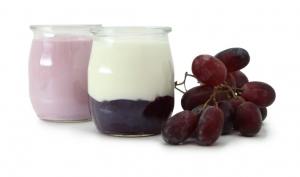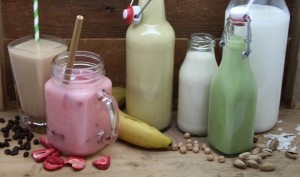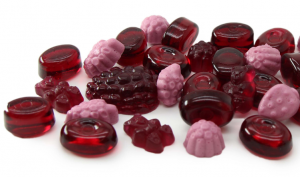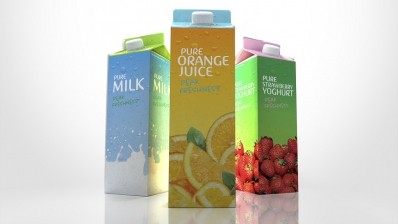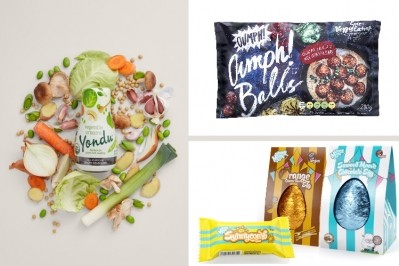Eat with your eyes: the world of food colours

“We ‘eat with our eyes’ and if it looks good, we expect it to taste good and do us good,” observes Nathalie Pauleau, global product manager for natural colours at Givaudan.
However, our visual connection with food is subject to change according to wider trends, and Pauleau says this has been especially evident during the pandemic.
“In the current environment consumers are looking for moments of fun and optimism as well as energising experiences and important time out for relaxation, and colours can help connect with these needs,” she explains.
“In 2020 blues and greens were very popular as they have strong connections with health, vitality, relaxation and wellbeing and have long been associated with nature. As major disruption continues worldwide, we expect this colour trend to remain strong in 2021.”
Emotional reaction
The mental bond created by food colour is so strong, in fact, that psychology is increasingly used to create products that connect with consumers on a deeper, more emotional level, according to Emina Goodman, senior director of colours at ADM.
“Each colour has its own set of associations and meanings depending on the context, and small variations can make all the difference in how something is perceived,” she says.
“For example, yellow is often associated with positivity and reassurance and, when used alongside ingredients like citrus and turmeric, it can have positive associations with energy, good digestion and benefits for inflammation.
“Green is a universal colour of fresh, natural, plant-based foods, from mint to peas, while grey foods like mushrooms imply something filling and hearty.”
Goodman observes that brands are tapping into the cultural mood and pairing comforting flavours like vanilla and cinnamon with warm, earthy shades like cream.
“Over time, we expect to see consumers gravitate towards bolder, brighter shades that reflect their renewed optimism and desire for a fresh start,” she says.
Givaudan’s Pauleau agrees, predicting that vibrant colours such as yellows and oranges could be popular in 2021 as they’re associated with ‘energy and immunity’. She believes there could also be a trend for vibrant reds as ‘consumers look to add fun and excitement back into their lives’.
Instagram effect
In another sign of the times, social media is a factor affecting the popularity of food colours. Pauleau observes that the ‘Instagram effect’ increasingly plays a role.
“Food that is attractive and exciting is always a win with the consumer, but never more so than in today’s social media generation,” she explains.
“Vibrant, ‘Instagrammable’ colours attract attention and help manufacturers differentiate their products. Social media sharing is also an important channel to promote products to a wider audience and build loyalty.”
Bertrand Martzel, commercial director for colours at Kalsec, has spotted the influence of social media in the recent trends for blue, purple and red, ‘from Peruvian purple corn to beetroot’.
“These colours have proven to be bold and bright yet natural, meeting consumer desire for clean label, allowing them to ‘eat with their eyes’ and being ‘Instagram-worthy’,” he says. “These colours are often seen on doughnuts and other sweet desserts, as well as to provide visual appeal to sauces.”
Clean and natural
As Martzel suggests, health considerations and the growing popularity of clean label products are key drivers in the colour sector at present.
Givaudan’s Pauleau observes that demand for natural products with perceived benefits has strengthened over the past year as consumers look to improve their lifestyle and strengthen immunity in response to the pandemic.
“The focus on natural food formulation and recognisable, clean label ingredients remains important, driving demand for natural colours, especially ones that are minimally processed and easily recognisable,” she explains.
“Consumers want colours to reflect the fresh vibrancy they see in nature so plant and vegetable extracts as well as colouring foods are becoming increasingly popular, inspired by the best nature has to offer.”
Against this background, blue spirulina, yellow turmeric extract and red elderberry extracts are proving popular as they all provide ‘great vibrant colours’, adds Pauleau.
Health kick
Sensient is another major player in food colours keeping a close eye on consumers’ growing interest in health. Pat Hanson, general manager, points to Mintel research from last year that found one in two consumers in Europe added more nutrients to their diet to support their immune system.
“Helping consumers to make healthy choices with natural ingredients continues to be highly relevant,” he says.
Hanson explains that Sensient uses traditional foods such as vegetables and fruits to achieve ‘bright and attractive’ colour shades ‘in virtually any application’. The latest addition to the company’s range, for example, builds on its portfolio of black carrot options.
“Wild Berry Purple provides unique shades of red with a slight purple twist,” says Hanson. “This efficient and effective solution works perfectly in beverages and applications with a low pH.”
Back to nature
Naturally sourced colours are now the ‘norm’ rather than the exception, according to Kalsec’s Martzel. “Foods traditionally used for colour undergo a gentle concentration process so that they retain the nutritional profile of the fruit or vegetable while being an effective colour with a cleaner label declaration,” he explains.
Antoine Morel, colours product manager at Diana Food (part of Symrise Nutrition), says organic is ‘a natural progression’ of the clean label trend.
“It avoids the use of the chemicals and additives involved in the growth of the raw materials themselves,” he says.
“We’ve recently launched a range of organic colours to meet this rising demand. Our range of yellow, orange and purple carrots, beets and spirulina allows us to colour the entire rainbow, organically.”
Mimicking meat
The rise of the plant-based movement and the growing demand for meat analogues is another factor driving innovation in the colour sector.
“Consumers are expecting these products to be really similar to normal meat in taste, appearance, texture,” says Morel. “If you want to mimic beef, the colour must be pink or red before the cooking process and brown after.”
Diana Food is among the companies using red beet for this purpose, and Morel says it has been widely accepted by consumers for its natural browning reaction to heat.
“As one of our core areas of expertise, we have created solutions to enhance and capitalise on this effect,” he explains. “This enables us to colour vegetarian and vegan burgers that can be cooked rare, medium or well done with the colour changing appropriately.”
Sensient, meanwhile, customises meat analogue solutions ‘for individual needs based upon aesthetic goals and manufacturing processes’.
“In a market with increasing new product development going on, colour is equally used to differentiate flavour and special seasonings in meat substitute products,” says Hanson.
“Warm brown from Sensient’s Natural Brown range can support the barbecue concept in a chicken-like product, while a bright red-orange blend works well in spicy ‘chicken’ curry.”
Of course, visuals are just one aspect of the consumer experience. Other senses come in to play.
“To take it to the next level, ADM’s food colour experts also ensure that authentic browning comes alongside rich aromas, a great sizzle and a texture that evolves from raw to tender the way traditional meat would,” says Goodman.
“We see it as a dance of sorts,” she adds. “Every element must be harmonised to deliver the perfect performance.”
Colour challenges
As you might expect from a sector looking to meet the changeable but scrupulous tastes of the food market, there are tough challenges to overcome.
Goodman offers the example of the dairy and dairy alternative space, which, she says, ‘requires some innovation’.
“In products that are ultra-heat treated, such as strawberry milkshakes, a red shade is needed that remains stable even under harsh processing conditions,” Goodman explains.
“When it comes to dessert options, it can be a challenge to keep swirls of fruit colour separate from white yoghurt. And these colour challenges cross over into baked goods applications too, where more vibrant yet stable reds are needed for the likes of red velvet cake.”
Jacqui Passmore, marketing manager UK & Ireland at Dawn Foods, points to potential issues with ‘colour fade’ over shelf life of bakery goods when using natural colours in some applications.
“To create vibrancy in bakes using natural colours, bakers are advised to bake in smaller batches or bake cake layers, for example, where the natural colour will be much more concentrated,” she explains.
This is especially important in maximising that Instagram effect for the on-trend bold colours such as purple, adds Passmore.
Sustainability
As with all areas of the food industry, sustainability is high on the agenda of the colour sector.
“Kalsec is fully integrated in its supply chain so that we can introduce the best agricultural and processing practices to improve efficiencies and therefore costs in the supply chain, while maintaining quality in the end solution,” says Martzel.
Morel of Diana Food, meanwhile, says his company optimises extraction from raw materials before returning remaining by-products to farms to be used as animal feed or as field fertiliser for the next coming crop.
“Diana Food has a team of agronomists working closely with the farmers to improve agricultural practices, the impact on the environment and the performance of the seeds,” he explains.
“We grow the raw materials as close to the production sites as possible to ensure the best quality and to reduce transport,” Morel adds. “By controlling our upstream, we minimise our impact on the environment and ensure quality products.”
Pillar of the industry
Sensient’s Hanson observes that sustainability has become ‘a strategy pillar’ for many food manufacturers.
“Companies wishing to be successful long-term and remain competitive in a mature market increasingly seek to differentiate from their competitors by integrating sustainability into the heart of their activities,” he says.
As such, Sensient has produced a range of colours free from palm oil following investment in research to improve stability of the product.
“The latest extensions to the palm-free range include new green and yellow shades offering proven performance in especially demanding beverage applications, as well as confectionery, dairy and savoury products,” says Hanson.
So all in all, while it’s true that consumers do ‘eat with their eyes’ to some extent, it’s clear that there’s much more to today’s food colour sector than just pretty or natural hues.
